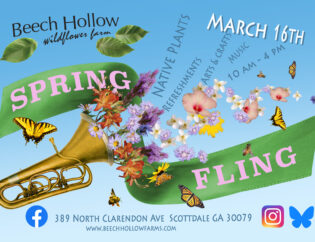Back in 2009, Ecoaddendum received a grant through Park Pride to help control erosion and install several native plant beds in Freedom Park. The main area of concern was an eroded slope between two sidewalks near the intersection of Oakdale Street and North Ave. The slope was fairly steep, probably close to 45°, and did not have enough topsoil on it to allow even grass to grow.
Erosion is a vicious cycle. It usually starts with humans or other animals disturbing the ground or removing the topsoil layer and exposing clay or mineral soils. This lack of humus-rich topsoil makes it harder for plants to take root and allows water to carry away more soil as it rushes off the impermeable surface.
The effects of the erosive process can be seen in the above picture. The orange-brown areas in the middle of the slope are exposed clay soils. If this hillside had a healthy, continuous layer of topsoil with plants growing in it then it would act like a sponge, with the matrix of plant roots holding the soils, and the soils absorbing water until they were saturated. Water would flow downhill slowly through the soil, and the slower water travels the less it can carry.
Once a disturbance was created that exposed the underlying clay water began to flow more quickly over the surface, allowing it to carry larger and larger soil particles. This allows the flow to undercut the adjacent topsoil much like a river cuts into a bank. More soil is carried away, which exposes a larger area, which allows more water to flow faster and carry away more soil…… you get the idea. In order to stem the tide of soil loss Ecoaddendum and Park Pride staff with a group of excellent volunteers took action to stabilize the bank and build new soil in which hundreds of native plants were installed.
The first step in the process was to break up the compacted soil. Using shovels and other garden tools the crew turned the earth so that the hard pan that had developed on the surface was cracked and broken so that water could again be absorbed into the soil instead of just running over the surface.
Now that the ground had been opened up, it was time to add the necessary materials to rebuild the soils so that they could once more support plant growth and hold water. In order to do this a 4” thick layer of finished compost was spread over the entire area.
This compost will slowly break down and seep into the subsoil to replace the nutrients that were lost to erosion. It will also provide a good moist, insulating environment for plant roots to establish and work their way into the compacted soils below. Note the crew of great volunteers at the top of the hill!
The steep slope of this hillside is half of the reason that it became eroded in the first place. Simply adding compost isn’t going to help if the compost just washes away during the next heavy rainfall. In order to secure the newly amended soils until plant roots can take over the security detail a layer of jute cloth was laid over the area and secured with landscape staples.
Jute cloth (also known as jute geotextile) is a plant based fiber woven into a lattice-like fabric. It will eventually biodegrade after several years, but in the meantime it holds the soil in place while allowing water and light to pass through so that plants may grow.
The next step in the process lacks photo documentation, but is pretty easy to understand: installing plants. After the compost was spread and covered we gave it a few weeks to settle and then returned with our plants. Using scissors, we cut small holes or slits into the jute cloth, dug down and planted a variety of low-growing native plants. Low-growing species were selected because the hillside is periodically mowed by park maintenance staff and short, ground hugging plants would suffer less damage from lawnmower blades if not just pass right under them.
Then all there is to do is wait…….6 months…….
Viola! Colorful, stable, erosion-free hillside.
Plant species included:
Cinquefoil (Potentilla canadensis)
Creeping Phlox (Phlox subulata)
Blue-eyed Grass (Sisyrinchium angustifolium)
Birdfoot Violet (Viola pedata)
Green and Gold (Chysoganum virginium)
Silkgrass (Pityopsis graminifolia)
Most of the plants installed spread by runners or root stolons. These creeping stems that radiate outward from the parent plant sprout roots each time they contact the ground. In the process they form large colonies of resilient plants that are excellent at holding soil.
Erosion is a pretty widespread problem in the urban/suburban landscape. Most developers remove the topsoil because it has a large organic constituent which will inevitably decay, so it is an unstable base on which to build anything. The process outlined above can help to restore a rich topsoil layer and allow plants to build strong roots and hold the soil in place naturally.
Many thanks to all the volunteers who helped complete this project!















